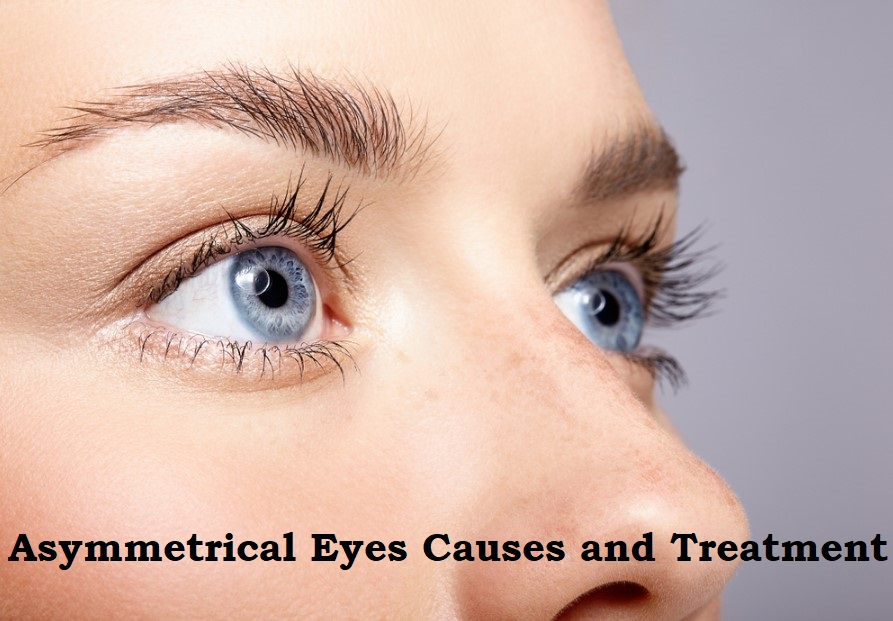The expression “asymmetrical eyes” usually refers to eyes of various shapes, sizes, or even tones. One eye might sit higher or lower than the other, open more extensive or smaller than the other, or sit further back in the eye attachment.
An audit of writing found that faces that appear to be excessively awesome — or excessively balanced — can cause individuals to feel awkward. Hence, some level of facial imbalance might be ideal.
Yet, sometimes, eyes that appear to be unique might be affected by an eye issue or medical condition. If your eyes aren’t even, it’s vital to have your eyes inspected by a specialist to determine the reason for their asymmetrical appearance and decide if treatment is required.
Table of Contents
Causes of Asymmetrical Eyes
Hereditary qualities are a typical reason for asymmetrical eyes. There is a high chance that you will have highlights like those of your family members and other relatives. Assuming you look carefully, odds are you’ll see that others in your family also seem to have one eye that is higher than the other.
Coming up next are other potential reasons for asymmetrical eyes and their side effects.
Enophthalmos
Enophthalmos is the back removal of the eye and happens when a physical issue or ailment changes the space behind the eye, making the eye sink. It can happen unexpectedly or continuously over years.
Enophthalmos most commonly occurs as a result of injury, such as hitting your face during an auto accident. Other causes can be various ailments, including those that affect the sinus hole behind the eyes.
Many individuals experience no side effects other than the sinking or hanging appearance of one eye. Depending on the reason, you may also experience a pulling sensation under the eye, sinus issues, or facial pain.
Conditions that can cause enophthalmos include:
- Persistent maxillary sinusitis quiet sinus disorder Paget sickness maxillary sinus cancers hard deformities Ptosis
- Likewise called saggy eyelid, this condition acquires upon entering the world (intrinsic) or developed later (procured). Ptosis is more common in adults. It happens when the levator muscle, which holds up your eyelid, extends or confines from the eyelid, making it hang. It causes the presence of asymmetrical eyes, so one eye looks lower than the other.
- In certain individuals, Ptosis affects both eyes. Maturing is the most widely recognized cause of Ptosis, but it can also be triggered by neurological disorders, cancers, and stroke.
- If the eyelid hangs to the point of slowing down your vision, a medical procedure is prescribed to address it. Medical procedures perform for restorative reasons if you decide.
Proptosis
Proptosis, also known as exophthalmos, is the projecting or swelling of one of the two eyes. Graves disease is the most widely recognized cause in adults. It makes the tissues behind and around the eye enlarge, pushing the eyeball forward. Sometimes, proptosis can also be caused by contamination, cancer, or death.
Alongside an adjustment of your eye’s appearance, you may want to take note:
Eye torment throbbing in the articulated visual issues Normal facial imbalance
It is fascinating to have well-balanced facial features. The vast majority have to change deviations in facial highlights that are viewed as typical. This is also affected by your age, orientation, and nationality.
Typical facial imbalance can cause one eye to seem higher or lower than the other. Occasionally, it’s not asymmetrical eyes, but rather asymmetrical eyebrows or the state of your nose causing your eyes to seem asymmetrical.
Maturing is another common reason for asymmetrical facial features. As we age, our skin and delicate tissues lose flexibility which makes the skin around our facial highlights droop.
A 2017 audit of studies utilizing hemifacial models, which show an individual’s “unaltered” face close to their ideal right-side evenness and wonderful left-side balance, has observed that ideal facial evenness is seen as perplexing and inelegant. Some facial imbalance is not only common but considered more attractive.

Treatment
Generally speaking, asymmetrical eyes don’t need treatment. This is particularly evident if the deviation is the consequence of hereditary qualities or maturing.
In any case, assuming that a hidden condition contributes to facial imbalance, individuals might require treatment for the condition. Treatment may also be fundamental when asymmetrical eyes are causing vision issues.
Certain individuals might wish to treat asymmetrical eyes for restorative reasons.
Potential medicines include:
Tending to Hidden Ailments
At times, treating the underlying problem can cause deviated eyes to appear to be less recognizable.
For instance, treating Graves’ illness with radioactive iodine or thyroid meds might stop the eyes from jutting.
People who have an underlying condition that is causing their eyes to appear asymmetrical should talk to their primary care physician about dealing with their side effects.
Botox
Botox is a non-surgical treatment for asymmetrical facial features. It includes infusing Botox, which is a muscle relaxer that comes from the bacterium Clostridium botulinum, into the region around the eyebrows.
Botox treatment lifts the brows, decreasing the presence of asymmetrical eyes. The effects of Botox typically last for around 3-6 months.
Brow Lift
A forehead lift is a restorative technique that repositions the eyebrows. The point is to give the face a more youthful appearance and a more prominent facial balance.
There are various types of strategies a specialist could use to lift the forehead, yet they will normally perform the procedure while an individual is under broad sedation.
A few possible dangers of a brow lift include:
Draining further deviation (however extra medical procedure can address this) going bald or changes to the hairline contaminations a hypersensitive response to the sedative scarring transitory or extremely durable skin deadness
The effects of a forehead lift are not super durable. Age and sun damage can cause the skin to hang loosely again.
Blepharoplasty
Blepharoplasty is a kind of superficial medical procedure that revises asymmetrical eyelids. It is a popular style strategy.
During the surgery, a specialist will remove extra fat, muscle, or skin from around the eye region to make the eyes look more balanced.
After such a procedure, an individual might encounter brief swelling and expansion.
A few different dangers include:
Draining may result in an unfavorably adverse response to the sedative scarring
Less frequently, the technique might cause constant conjunctivitis (aggravation of a piece of the eye) or expansion that carries on for over 90 days.
In some cases, visual impairment can occur.
Orbital Medical Procedure
An orbital medical procedure is a medical procedure that performs on the eye attachment (circle). There are a couple of types of orbital medical procedures, depending upon the issue and the region of the eye attachment that it influences.
A specialist might develop systems to:
fix breaks eliminate cancers eliminate bones or fat to treat the impacts of Graves’ illness recreate the life systems of the attachment
Like all medical procedures, these methodologies convey chances
FAQs
Having unbalanced eyes is entirely normal and not a reason to worry. While it will definitely be perceptible to you, asymmetrical eyes are seldom recognizable to other people.
Truth be told, many investigations have shown that asymmetrical faces view as more alluring than balanced faces.
Truth be told, many investigations have shown that asymmetrical faces view as more alluring than balanced faces.
Ptosis is a condition that happens when one or both upper eyelids hang. The edge of the upper eyelid falls towards or over the student, making the eye look smaller than the other.
Ptosis is generally brought about by extending or diminishing the ligament between the muscle that ordinarily raises the eyelid and the actual eyelid.
Conclusion
Deviated facial highlights are normal. They are sometimes the result of hereditary qualities, maturing, or lifestyle choices.
Most people don’t notice a facial imbalance in others, but examination suggests that it could be an advantage.
Be that as it may, for individuals who wish to address asymmetrical eyes, a few corrective techniques, and home cures are accessible.
Sometimes, an illness might be causing facial asymmetry. In these cases, treating the hidden condition might reduce the presence of asymmetrical eyes.
Anybody worried about their facial asymmetry should consult their primary care physician. It is also really smart to seek clinical consideration if the unevenness came on out of nowhere or maybe it is causing vision issues or other side effects.
